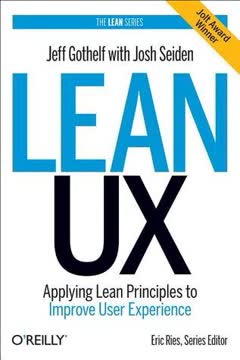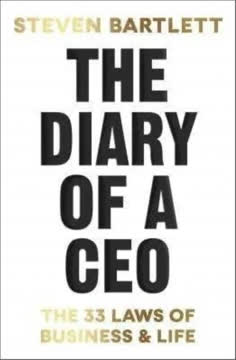重点摘要
1. 你的WHY是你的目标、原因或信念,它激励着你
“我们每个人都有一个WHY,一个深植于内心的目标、原因或信念,它是我们激情和灵感的源泉。”
你的WHY定义了你。 它是你每天早上起床的原因,是你所做一切事情背后的驱动力。与短暂的快乐不同,源于你的WHY的满足感是持久的。这不是关于你做什么,而是关于你为什么做。你的WHY不是理想化的;它反映了你内心深处的真实自我。
黄金圈法则 说明了激励人心的领导者和组织如何思考、行动和沟通:
- WHY:你的目标、原因或信念
- HOW:你为实现WHY所采取的行动
- WHAT:你WHY的具体体现
理解并表达你的WHY可以让你做出更有意图的选择,激励他人,并在工作和生活中找到更大的满足感。
2. 通过回顾过去的故事发现你的WHY
“要揭示我们的WHY,我们必须汇集那些突出的记忆——那些定义性的时刻——并审视它们以找到其中的联系。”
你的WHY根植于你的过去。 要发现它,你需要回顾那些塑造了你今天的重大经历和人物。这些故事揭示了指向你核心目标的模式和主题。
发现WHY的过程 包括:
- 收集你生活中有影响力的故事
- 与伙伴分享这些故事
- 识别重复出现的主题
- 起草并完善你的WHY陈述
这个过程需要脆弱和开放。关键是要专注于具体的、情感充沛的记忆,而不是泛泛而谈。你的伙伴在客观倾听并帮助你看到连接你故事的金线方面起着至关重要的作用。
3. 一个强有力的WHY陈述遵循格式:“为了... 以便...”
“为了__________ 以便__________。”
这个简单的格式捕捉了你的WHY的本质。 第一个空白代表你的贡献——你为他人做的事情。第二个空白描述了这种贡献的影响——你在世界上产生的不同。
一个强有力的WHY陈述应该是:
- 简单明了
- 可操作的
- 专注于你对他人的影响
- 用与你共鸣的肯定语言表达
完善你的WHY陈述可能需要时间。重要的是要记住,虽然确切的词语可能会演变,但其背后的感觉和意义应该保持不变。目标是表达一个对你来说真实且激励人心的陈述。
4. HOW是你为实现WHY所采取的行动
“我们的HOW是当我们处于自然最佳状态时,为实现我们的WHY所采取的行动。”
HOW是你的优势。 它们是让你最有效地生活你的WHY的具体行为和行动。与单一的WHY不同,你通常有多个HOW——通常不超过五个。
识别你的HOW:
- 回顾发现WHY过程中未纳入WHY陈述的主题
- 将这些主题缩小到最重要的几个
- 将这些主题转化为可操作的陈述
你的HOW作为决策的过滤器,帮助你创造适合你茁壮成长的环境。它们补充你的WHY,使你的方法独特,即使其他人有类似的目标。
5. WHAT是你WHY的具体体现
“我们的WHAT是我们WHY的具体体现,是我们每天实际做的工作。”
WHAT是你的WHY和HOW的可见结果。 它们是你通过产品、服务或角色表达你的目标的方式。虽然WHAT可以随着时间的推移而改变,但你的WHY保持不变。
理解WHY、HOW和WHAT之间的关系可以让你:
- 确保你的行动和决策的一致性
- 更有效地沟通你做什么以及为什么重要
- 识别与目标一致的新机会
记住,人们不会购买你做什么;他们购买你为什么做。当你的WHAT清晰地反映你的WHY时,你更有可能吸引相信你目标的客户、合作伙伴和团队成员。
6. 分享你的WHY以吸引那些相信你信念的人
“沟通我们的WHY是识别世界上那些相信我们信念的人的重要部分,他们将成为我们可信赖的朋友、忠实的客户或顾客、敬业的员工和激励的合作伙伴,共同实现我们的WHY。”
从WHY开始建立更深的联系。 当你分享你的目标时,你会吸引那些与你信念共鸣的志同道合的人。这在个人和职业领域都创造了更强大、更有意义的关系。
分享WHY的技巧:
- 与陌生人练习,以便更舒适地表达
- 使用不同版本的WHY陈述,使其在不同情境中更具相关性
- 分享展示你WHY在行动中的故事
- 耐心——掌握有效沟通你的WHY需要时间
记住,你的WHY是一个过滤器。它会吸引一些人,也会排斥另一些人,这完全没问题。目标是与那些分享你价值观和愿景的人建立联系。
7. 通过每天有意地生活你的WHY来保持它的活力
“当你生活你的WHY时,你会茁壮成长,你周围的人也会如此。”
生活你的WHY需要有意识的努力。 仅仅知道你的目标是不够的;你必须积极地将你的决策和行动与之对齐。这个持续的过程会带来更大的满足感,并激励你周围的人。
保持WHY活力的方法:
- 用它作为决策的过滤器
- 定期分享强化你WHY的故事
- 围绕支持和相信你目标的人
- 寻找通过工作和生活表达你WHY的新机会
- 反思你的行动如何与WHY对齐,并根据需要进行调整
通过持续地生活你的WHY,你会创造一个积极的反馈循环,增强你的目标感,并吸引更多机会产生有意义的影响。
8. 组织必须防止在成长过程中失去WHY
“为了在时间的长河中保持WHY的活力,我们必须将其置于中心位置,沟通它并承诺每天有意地生活它——有目的地、带着目的地。”
“分裂”发生在组织失去对WHY的关注时。 随着公司的成长,它们往往会将注意力从最初的目标转移到更容易衡量的指标上,如收入。这可能导致激情减退、生产力下降和文化崩溃。
分裂的迹象:
- 压力增加和参与度下降
- 关注点从激励转向操控(例如,使用奖金留住员工)
- 组织感觉“就像一份工作”而不是一个使命
防止分裂的方法:
- 清晰地表达并定期沟通组织的WHY
- 确保所有决策和策略与WHY一致
- 培训领导者以体现和强化WHY
- 创建支持和奖励WHY一致行为的系统
- 定期分享使WHY栩栩如生的故事
通过保持警惕并有意地生活他们的WHY,组织可以在成长过程中保持强大、激励人心的文化。
9. 讲故事对于发现和强化你的WHY至关重要
“讲故事是知识和理解传递的方式,自远古以来就存在,早在书面语言发明之前。”
故事是意义和价值的强大载体。 它们不仅帮助你发现你的WHY,还作为持续的提醒和强化你的目标。分享展示你WHY在行动中的故事,使其对他人更具象和激励性。
在WHY背景下讲故事的好处:
- 帮助揭示你经历中的模式和主题
- 使抽象概念更具相关性和记忆性
- 激发情感,加强对WHY的连接
- 提供如何在各种情况下生活WHY的例子
- 激励他人反思他们自己的目标和价值观
鼓励在你的组织或个人网络中分享与WHY相关的故事,以保持目标的活力和生机。
10. 对齐你的WHY、HOW和WHAT以在自然最佳状态下运作
“当这三者平衡时,我们处于自然最佳状态。我们真正地生活我们的WHY。”
对齐创造真实性和影响力。 当你的行动(HOW)和具体输出(WHAT)清晰地表达你的目标(WHY)时,你会更有效地运作并感到更满足。这种对齐也使他人更容易理解和连接你所提供的东西。
实现对齐的步骤:
- 清晰地表达你的WHY、HOW和WHAT
- 定期评估你当前的活动与WHY的契合度
- 寻找新的机会,让你更充分地表达你的WHY
- 愿意放弃那些不符合你目标的项目或角色
- 围绕支持你WHY的人和环境
记住,对齐是一个持续的过程。随着你的成长和发展,你可能需要调整你的HOW和WHAT,但你的核心WHY应该保持不变。
最后更新日期:
FAQ
What's "Find Your Why" about?
- Purpose of the Book: "Find Your Why" by Simon Sinek is a practical guide designed to help individuals and teams discover their purpose, cause, or belief that drives them.
- Inspiration and Fulfillment: The book emphasizes the importance of waking up inspired and going to bed fulfilled by understanding and living your WHY.
- Practical Steps: It provides actionable steps and exercises to help readers articulate their WHY and integrate it into their personal and professional lives.
- Collaboration with Co-authors: Co-authors David Mead and Peter Docker contribute their expertise in leadership and culture to enhance the book's practical approach.
Why should I read "Find Your Why"?
- Discover Your Purpose: The book offers a structured approach to uncovering your personal or organizational purpose, which can lead to greater fulfillment and motivation.
- Improve Leadership and Culture: It provides insights into creating environments where trust and cooperation thrive, benefiting leaders and teams alike.
- Actionable Guidance: Unlike many theoretical books, "Find Your Why" includes specific exercises and workshops to help readers apply the concepts in real life.
- Broader Impact: Understanding and living your WHY can lead to positive changes not only in your life but also in the lives of those around you.
What are the key takeaways of "Find Your Why"?
- The Golden Circle: The book introduces the concept of the Golden Circle, which includes WHY, HOW, and WHAT, emphasizing the importance of starting with WHY.
- Nested WHYs: It explains how individuals, teams, and organizations can have interconnected WHYs that align with a larger purpose.
- Storytelling for Discovery: The process of discovering your WHY involves sharing and analyzing personal stories to identify recurring themes and patterns.
- Living Your WHY: The book stresses the importance of aligning your actions with your WHY to achieve long-term fulfillment and success.
How does the Golden Circle work in "Find Your Why"?
- Three Levels: The Golden Circle consists of three levels: WHAT (the actions you take), HOW (the values or principles that guide your actions), and WHY (the purpose or belief that drives you).
- Inside-Out Approach: Successful individuals and organizations think, act, and communicate from the inside out, starting with WHY, which inspires others.
- Biological Basis: The concept is grounded in biology, with the WHY corresponding to the limbic brain, responsible for feelings and decision-making.
- Application: Understanding and applying the Golden Circle can lead to more intentional choices and inspire others to join your cause.
What is the process for discovering your WHY in "Find Your Why"?
- Gather Stories: Begin by recalling specific, impactful stories from your past that reveal who you are at your natural best.
- Identify Themes: Analyze these stories to identify recurring themes, words, or phrases that capture your core values and motivations.
- Draft a Why Statement: Use the themes to draft a concise Why Statement in the format "To [contribution] so that [impact]."
- Refine and Live Your WHY: Continuously refine your Why Statement and align your actions with it to live a more fulfilled life.
How can teams discover their WHY using "Find Your Why"?
- Tribe Approach: The book outlines a Tribe Approach for groups to articulate their common purpose, involving a facilitated workshop.
- Three Conversations: Teams engage in three conversations to share stories, identify contributions, and determine the impact of their work.
- Drafting a Why Statement: The process culminates in drafting a Candidate Why Statement that captures the team's collective purpose.
- Nested WHYs: Teams can develop Nested WHYs that align with the organization's overarching WHY, enhancing cohesion and motivation.
What role do HOWs play in "Find Your Why"?
- Actions to Live Your WHY: HOWs are the actions you take to bring your WHY to life, reflecting your strengths and guiding principles.
- Derived from Themes: HOWs are derived from the themes identified during the Why Discovery process, making them authentic and actionable.
- Filter for Decisions: They serve as a filter for making decisions, ensuring that your actions align with your core values and purpose.
- Complementary to WHY: While the WHY provides direction, HOWs offer the means to achieve it, making the combination unique to each individual or team.
What are some best quotes from "Find Your Why" and what do they mean?
- "Fulfillment is a right and not a privilege." This quote emphasizes that everyone deserves to feel fulfilled by their work and life, not just a select few.
- "The goal is not to focus on what’s standing in your way; it is to take steps that will have a positive and lasting effect on everyone around us." It highlights the importance of proactive action and positive impact over dwelling on obstacles.
- "Happiness comes from what we do. Fulfillment comes from why we do it." This distinction underscores the deeper, lasting satisfaction that comes from living in alignment with one's purpose.
- "The opportunity is not to discover the perfect company for ourselves. The opportunity is to build the perfect company for each other." It suggests that creating a fulfilling work environment is a collective effort, not just an individual pursuit.
How does "Find Your Why" address challenges in discovering and living your WHY?
- Common Challenges: The book acknowledges challenges such as difficulty articulating feelings, resistance to change, and misalignment with current roles.
- Overcoming Obstacles: It provides strategies for overcoming these challenges, such as using storytelling, seeking feedback, and refining your WHY over time.
- Living Your WHY: Emphasizes the importance of aligning daily actions with your WHY and using it as a guide for decision-making and relationship-building.
- Continuous Process: Recognizes that discovering and living your WHY is an ongoing journey that requires patience, reflection, and adaptation.
How can organizations prevent the "split" mentioned in "Find Your Why"?
- Understanding the Split: The "split" occurs when an organization's focus shifts from its WHY to its WHAT, leading to decreased trust and engagement.
- Maintaining Alignment: Organizations can prevent the split by continuously aligning their actions, strategies, and communications with their WHY.
- Leadership Role: Leaders play a crucial role in keeping the WHY alive by modeling it, sharing stories, and fostering a culture of trust and cooperation.
- Storytelling: Regularly sharing stories that embody the organization's WHY helps reinforce its purpose and inspire employees to stay connected to it.
What is the significance of storytelling in "Find Your Why"?
- Discovery Tool: Storytelling is a key tool for discovering your WHY, as it helps uncover the emotions and values that drive you.
- Connection and Inspiration: Stories create emotional connections and inspire others by illustrating the impact of living your WHY.
- Keeping WHY Alive: Regularly sharing stories that reflect your WHY helps keep it alive and relevant, both personally and organizationally.
- Universal Language: Storytelling is a universal language that transcends cultural and organizational boundaries, making it an effective way to communicate purpose.
How does "Find Your Why" suggest using your WHY as a filter for decisions?
- Alignment with Values: Use your WHY as a filter to ensure that your decisions align with your core values and purpose.
- Guiding Principle: It serves as a guiding principle for choosing projects, partnerships, and opportunities that resonate with your beliefs.
- Identifying Misalignment: Helps identify situations or relationships that may be out of alignment with your WHY, allowing for proactive adjustments.
- Empowerment and Clarity: Provides clarity and empowerment in decision-making, leading to more intentional and fulfilling choices.
评论
《找到你的为什么》评价褒贬不一。有些人认为它有助于发现目标,而另一些人则批评它内容重复且缺乏实质。正面评价者赞赏书中的实用练习和对个人及组织的指导。批评者认为内容可以大幅压缩,并质疑其在原有《从为什么开始》概念之外的价值。许多人建议将其与西蒙·斯涅克的前作一起阅读,以获得*大收益。总体而言,反应差异很大,有些人觉得它鼓舞人心,而另一些人则将其视为企业激励的空话。
Similar Books
















